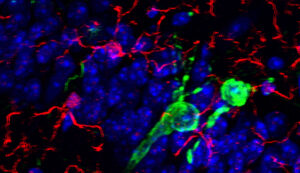The project at a glance
-
Start date:01 Jan 2023
-
Duration in months:1
-
Funding:Luxembourg National Research Fund (FNR)
-
Principal Investigator(s):Michael HenekaJens KREISELAnne GRÜNEWALDMartin Kampmann (external)Stefan Beyenburg (external)Guy Berchem (external)
Organisation and Partners
- Luxembourg Centre for Systems Biomedicine (LCSB)
- Molecular & Functional Neurobiology
- Neuroinflammation
- Translational Neuroscience
Project team
-
Michael Heneka
-
Jens KREISEL
-
Anne GRÜNEWALD
-
Martin Kampmann
UCSF
-
Stefan Beyenburg
Centre Hospitalier du Luxembourg
-
Guy Berchem
–
-
Maria Lorena Cordero Maldonato
-
Djalil Coowar
-
Rejko Krüger
Keywords
- Alzheimer’s disease
- neurodegenerative diseases
- microglia
- neuroimmunology
- tunnelling nanotube networks
- multiphoton microscopy
- microglia-neuron interactions
